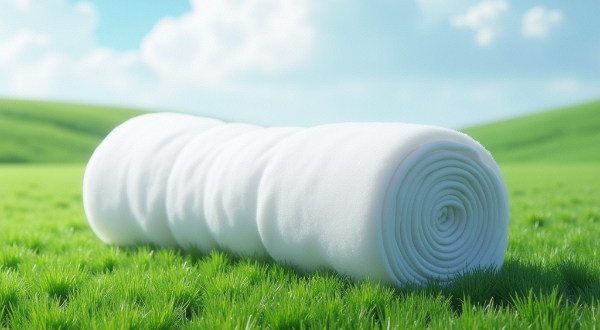Home>News
Processing methods of bio-based chemical fibers
- 2025-06-27
The representatives of traditional bio-based native fibers, that is, natural fibers, are cotton fibers and mulberry silk.
The production of cotton fibers and mulberry silk mainly uses cotton and silk as raw materials, and is mainly prepared by various physical means.
So, how are today's bio-based chemical fibers processed and prepared from biomass?Processing process of bio-based regenerated fibers
Taking regenerated cellulose fiber as an example, its processing process can be roughly divided into two processes: cellulose raw material pretreatment and fiber molding:
Cellulose raw material pretreatment: The cellulose from the raw material cannot be used directly, and needs to be purified before it can be used to prepare fibers. The purpose of purification is to remove lignin, hemicellulose and other substances in the raw material, and then make it into pulp (pulping process).
Common treatment methods include chemical treatment, most of which are treated by acid-base hydrolysis, but this treatment method is more harmful to the environment. A variety of new treatment methods have been gradually developed, such as biological treatment (using fungi and bacteria to remove lignin, cutin and other substances), enzyme treatment, physical treatment (using mechanical force, high-energy radiation, microwave treatment), steam explosion, etc.
At first, the cellulose needed to make fibers mainly came from cotton and wood. However, due to the limitation of cultivated land area and forestry resources in my country, the source of raw materials began to shift to other renewable resources in my country, such as bamboo, hemp, banana, sugarcane, etc., especially some agricultural and sideline products, such as bagasse, crop straw, coconut shell, etc. Using these agricultural and sideline products as raw materials for fibers can turn waste into treasure, reduce product costs, and provide broad possibilities for expanding production.
Fiber forming and processing: After pretreatment of fiber raw materials, the next step is fiber forming and processing. The spinning technology that has been industrialized is solution spinning, of which the most typical ones are viscose method and direct solvent method.
The viscose method is the most widely used method for producing cellulose fibers. First, cellulose is treated with strong alkali to generate alkali cellulose, then reacted with carbon disulfide to obtain sodium cellulose sulfonate, and then the derivative is dissolved in strong alkali to make viscose (spinning solution). The spinning solution is pressed from the fine holes of the nozzle into a coagulation bath composed of sulfuric acid, sodium sulfate and a small amount of zinc sulfate for coagulation and regeneration. After stretching and other processing, artificial fibers are obtained.
The production process involves complex chemical reactions, long process flow, low production efficiency, and produces waste gases such as CS2 and H2S, wastewater containing acid, alkali, and Zn2+, and sludge containing CaO, Al2O3, MgO, Fe2O3, etc., consuming a large amount of water, electricity, coal and other energy.
The representative of the direct solvent method is the development of a new solvent system represented by N-methylmorpholine-N-oxide (NMMO).
The NMMO production process is a process of producing cellulose fibers without chemical reactions. First, the pulp is fully mixed and swollen with NMMO containing crystal water, and then most of the crystal water is removed by decompression and dissolved to form a stable, transparent, and viscous spinning solution. After filtering and degassing, it is spun. It has the advantages of short process flow, low pollution, and good solubility.
The regenerated cellulose fiber produced by the NMMO method is called "Lyocell fiber", which is known as the green fiber of the 21st century.
As can be seen from the above content, the solvent method can omit a series of chemical treatment processes, shorten the production process and reduce pollution. At present, researchers at home and abroad are committed to the development of other solvent systems.
Other solvents include ionic liquids and low-temperature alkali/urea systems, among which the low-temperature alkali/urea system is a cellulose dissolution system independently developed by my country.
The research on the clean processing technology of cellulose fiber also includes the melt spinning method of cellulose ester, that is, preparing fiber raw materials by derivatization of biomass raw materials, and then melt spinning.
However, due to the complex chemical structure of natural biomass raw materials, containing multiple hydroxyl functional groups, it is easy to degrade at high temperature. Although its process has been reported, it has not yet formed a commercial product.











